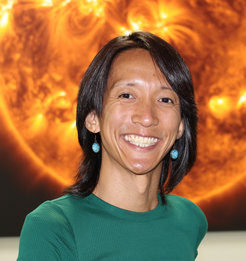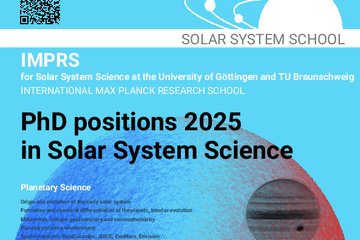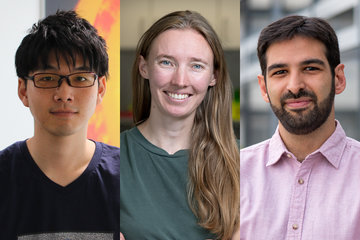Award for MPS scientist Kok Leng Yeo
Dr. Yeo from the Max Planck Institute for Solar System Research investigates why and how much the Sun’s irradiance fluctuates.
The International Council for Science (ICSU) has awarded this year's SCOSTEP Distinguished Young Scientist Award to Dr. Kok Leng Yeo from the Max Planck Institute for Solar System Research (MPS) in Germany. This is in honor of Yeo's pioneering contributions to our understanding of the brightness variations of the Sun. The computer models developed by Yeo constitute an important component of current climate research.

How does the Sun affect Earth’s climate? To answer this fundamental question of climate research more than a mere snapshot of the Sun and Earth are necessary. Instead, it is crucial to follow the evolution of both bodies - over decades, preferably even over centuries and millennia. A key entity in this endeavor is the amount of solar radiation impinging on the top of the Earth's atmosphere. How strong and how fast has it changed? And why?
The scientific work of MPS researcher Dr. Kok Leng Yeo orbits around these questions. "Solar irradiance measurements from space have only been available for approximately 40 years," he explains. However, no instrument covers this entire period and the different datasets are difficult to compare. It is therefore essential to start with a closer look at the Sun itself. Only by doing so, can the properties and processes causing our star’s brightness fluctuations be uncovered. In a second step, it is then possible to reconstruct these fluctuations also for times before the beginning of the space age.
Yeo's solar journey through time takes place on the computer. The scientist was able to calculate the brightness fluctuations using models that, for the first time, realistically and three-dimensionally take into account the processes in the Sun’s atmosphere. Previous calculations described the interaction of magnetic fields and solar plasma in this key region only in a very simplified manner.
The results of Yeo's simulations speak for themselves: the calculated irradiance not only agrees excellently with the measured values. The calculations also prove that the magnetic fields on the visible surface of the Sun are the chiefly cause of comparatively slow fluctuations in solar irradiance occurring within days and years.
One manifestation of these magnetic fields are sunspots. The abundance of these dark regions on the Sun can vary strongly – and has been systematically recorded by astronomers for hundreds of years. "These historical records allow us to study the evolution of Earth and Sun over a very, very long time," explains Yeo. Currently, the researcher is reconstructing solar fluctuations starting from the mid-17th century. At this time, the so-called Maunder Minimum began, a period of about 70 years in which the Sun was almost free of sunspots. At about the same time, temperatures in the northern hemisphere were unusually low. Yeo’s models will be able to clarify, more precisely than ever, whether the flagging Sun was responsible for this long, chilly period – and thus settle this long-debated question.
Dr. Kok Leng Yeo studied astrophysics at the Imperial College in London. After working in industry for six years, he relocated to the Max Planck Institute for Solar System Research in Göttingen as a Ph.D. student in 2010 where he became a member of the research group "Solar Variability and Climate". His PhD thesis, published in 2014, was recognized by the American Geophysical Association with the Fred L. Scarf Award.
SCOSTEP (Scientific Committee on Solar-Terrestrial Physics) is an interdisciplinary body of the International Science Council (ICSU) which comprises several international scientific unions and academies. SCOSTEP is devoted to the exploration of the relationship between Sun and Earth. Each year, the SCOSTEP Distinguished Young Scientist Award honors an outstanding scientist, who is at the beginning of his career and has made a significant contribution to his field of research.












